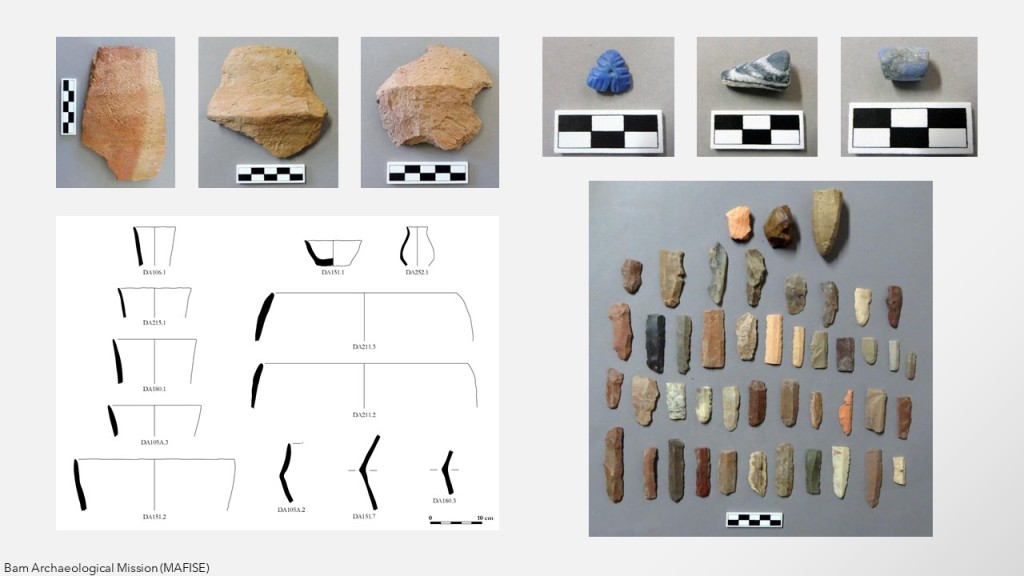In 2016 and 2017, BAM surveyed five areas within the Bam-Narmashir region, primarily west and east of the city of Bam (Areas 1 and 2), as well as closer to Abaregh further to the west (Area 3), south of Bam (Area 4), and along the piedmont of the Jebal Barez further to the southwest (Area 5).

As a result, BAM recorded about 250 sites. A number of them had already been identified before as part of Dr. C. Adle’s research program; yet, Dr. Adle and his colleagues had not investigated all parts of the areas BAM explored, and most of the Neolithic through Bronze Age sites within the Bam-Narmarshir region had not been studied and documented in detail. As a result, BAM has been able to record and document a large number of sites dating to the Neolithic and Chalcolithic periods.

The Bam-Narmashir Neolithic regional settlement consists of 64 sites including mounded sites and scattered sites including what are likely redeposited archaeological materials. They are all located east of Bam, in a plain called Darestan (Area 2). These sites divide into two groups: aceramic sites and sites that yielded pottery fragments. The surface survey assemblage from these sites includes lithics and a few small finds including a couple lapis lazuli ornaments, as well as vegetal-tempered pottery fragments at the pottery-bearing sites. Tell-e Atashi, the largest of these Neolithic sites in Darestan, is aceramic. It is radiocarbon dated to between the late sixth and mid-fifth millennia BCE.


The Chalcolithic sites amount to 95 sites and include sites dating to the fifth millennium BCE with ceramics relating to Tepe Yahya Period V and mostly sites dating to the fourth millennium BCE with ceramics of the so-called Aliabad style, broadly speaking, a ceramic style found at sites such as Tal-i Iblis. These sites were found both east and west of Bam. In Darestan, most of them are located north of the Neolithic sites, which were now abandoned. This shift in regional settlement may suggest a shift in watercourse location and access to water. West of Bam, these sites are essentially in Area 1, between Bam and Darzin, although a few fifth millennium BCE sites were found further west, closer to Abaregh. Like in Darestan, these Chalcolithic sites west of Bam were newly founded since there is no apparent earlier Neolithic occupation in this area.

These Chalcolithic sites include large mounded sites as well as sites with pottery kilns. In addition to typical fine painted ceramics, monochrome in the fifth millennium BCE and monochrome and bichrome in the fourth millennium BCE, BAM survey found copper objects at a few of the fourth millennium BCE sites. These objects include copper compartmented seals which have parallels in the Kech-Makran region of southwestern Pakistan.

